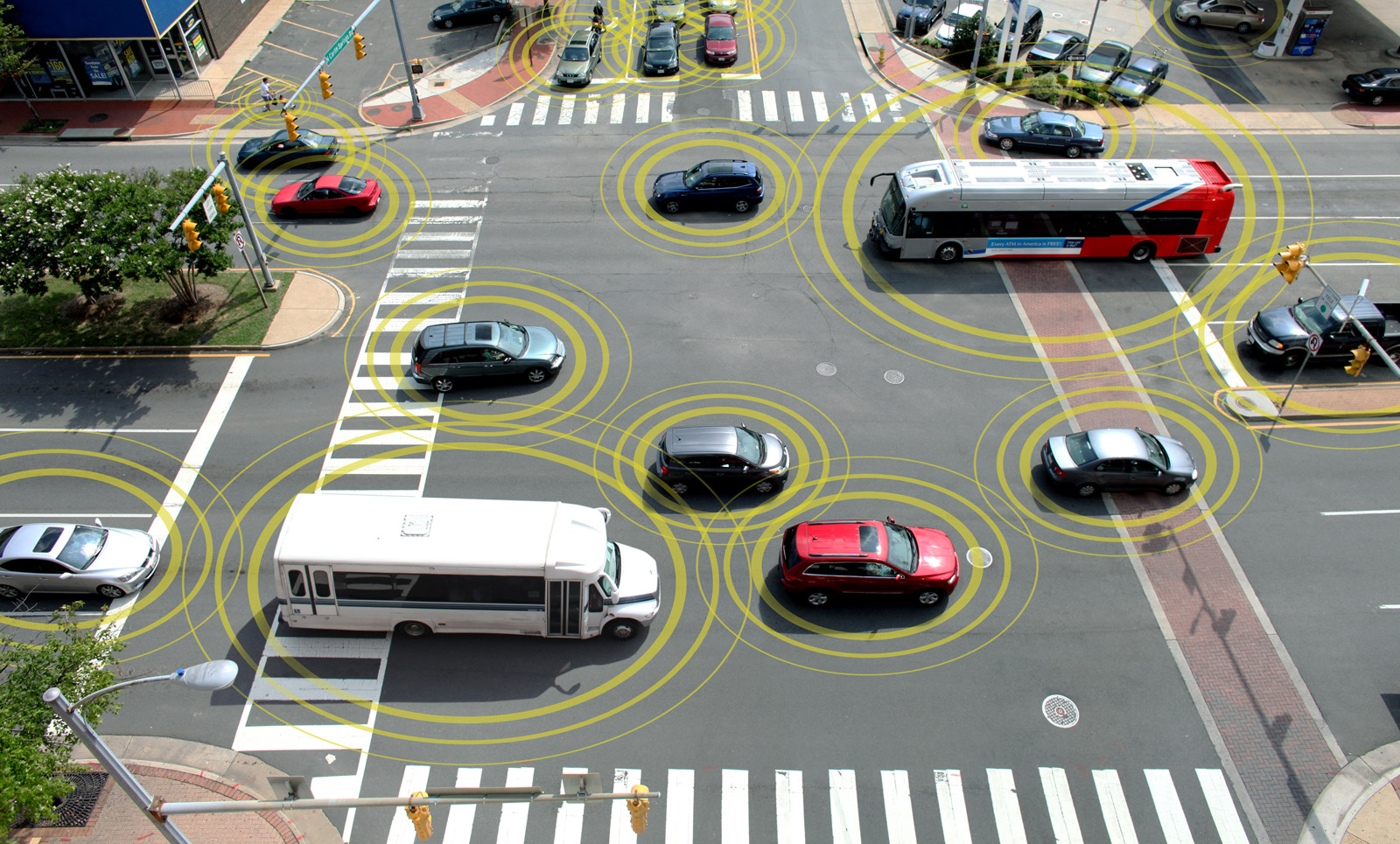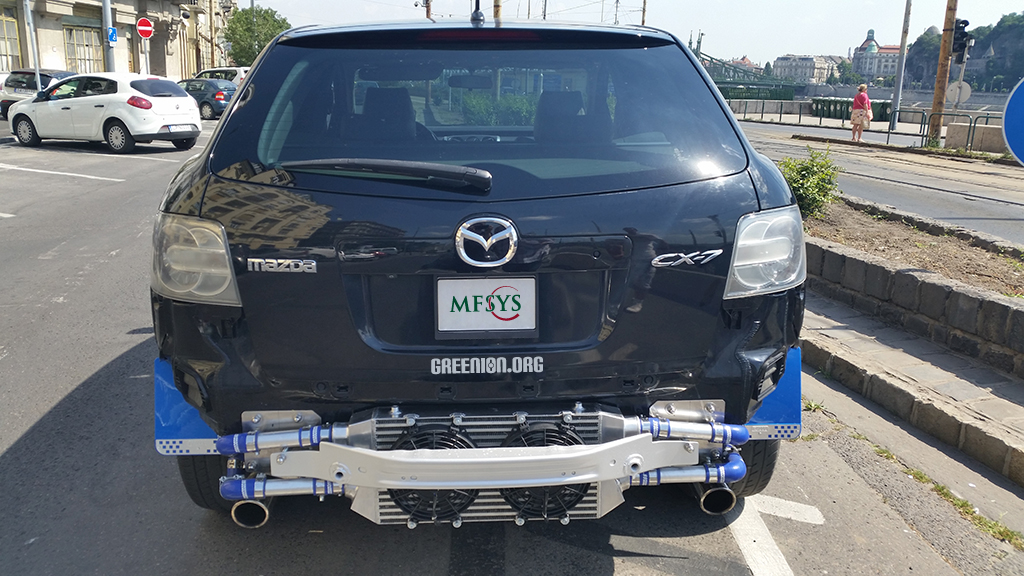Every technological breakthrough has a different effect on our lives. Some inventions are useful, some mean a real breakthrough and there are some that establish the first steps of building a brand new industry.
The following compilation includes inventions and milestones whose development is by all means worth notice as long as we do not know which one will have the greatest actual effect on our future.

(Source: http://images.thecarconnection.com/)
1. Vehicles communicating with each other
Simple wireless technology can possibly make transportation safer than ever. Today, most of the vehicles are equipped with some kind of radar or ultrasound technology, however, the drawback of these solutions is that they do no perceive any further vision than the closest object.
The technology that makes cars able to transmit – even from a distance of some hundred meters – information about their speed, the status of their steering wheel or brakes to each other or anyone taking part in the traffic is one the verge of its existence. The receiving vehicle processes the information transmitted by wireless technology and creates a detailed image of its environment to be able to warn the driver in case of any danger. Thus, for example, if somebody does not yield at a coequal crossing and proceeds without slowing down, the car arriving from the right will be able to warn its driver about the potential collision.
The first vehicles equipped with car-to-car communication technology can be available in 2017 in the USA; however, we probably will have to wait more for its launch in Hungary.
2. Internet-transmitting air-balloons
Google supports millions of people’s access to the Internet by helium-filled air-balloons. The company has first hinted at covering terrestrial areas by industrial basis stations applied on air-balloons flying in the stratosphere in 2013. They would provide the units with energy by solar cells, thus providing broadband Internet access much cheaper than by any traditional methods.
The balloons would be elevated approximately 20 kilometers high in the stratosphere so that they do not interfere with any air traffic. However, this is exactly the point where the first problems occur: as at this altitude, gusts of 300 km/h velocity are no rare incidents. By now, Google has solved this problem as well. Balloons that can detect the direction and strength of the blasts and are also able to avoid them before the meeting point.
There are already more than 100 of these balloons flying in the sky, and at the end of 2015, Google can start their official tests as well: providing continuous broadband Internet by this cutting-edge solution. According to the company, the balloons can be of great advantage for the developing countries within 1-2 years by providing access to the Internet for 4.3 billion people.
3. Cleansing seawater
Approximately 700 million people worldwide do not have access to clear water. According to presumptions, this figure can reach 1.8 billion within 10 years. The only real chance for many is gaining water from the oceans.
In this case, however, the solution is near at hand. The first plant that was able to produce drinking water from seawater under industrial circumstances was built in 2013 in Israel. The plant called Sorek is situated 10 kilometers from the Mediterranean shores and is expected to be able to filter 627,000 liters of water daily when reaching its full capacity. The plant was built by IDE Technologies from a budget of 500 million US dollars. Its curiosity is that it does not utilize traditional distillation technology but reverse osmosis. High professional engineering knowledge and financial advantages support its producing clear water at the lowest costs ever.
4. Greenion
According to specialists, current increase of the CO2-content of the atmosphere is unique in the history of mankind, in 90% due to the burning of fossil fuel. This is why they support a climate treaty similar to the Kioto Convention that would apply mandatorily to each and every country, specifying an obligation of decreasing CO2-emission.
The invention of Ferenc Mészáros can provide a breakthrough in this particular field: Greenion is the only player on the list related to Hungary. Greenion is fuel-gas and air cleansing system operated by renewable energy and thus, it is a self-supporting method. It clears high-gas-concentrated combination entering the mechanism in an electro-chemical way. The technical solution patterns the processes within the ozone layer by the induction of molecules. During the procedure, water-resolved, hydrated ion arose, while carbon-dioxide transforms into gas-carbonate ion or bicarbonate that can be found in natural water as well. Ionization only needs a low quantity of energy that can be provided by solar cells.

This technology can be adapted for a number of fields of industrial utilization as well as everyday life. Moreover, according to current circumstances, it will not take long for Greenion to be introduced to practical application. The prototype of the carbon-dioxide emission-decreasing system has already been created – optimized especially for cars. Thanks to innovation, the present version is easy to adapt for a number of car types; and current developments makes it theoretically possible to decrease their CO2-emission by 50%.
5. Directional photosynthesis
American researchers would like to influence the process of photosynthesis in order to gain sufficient nutrition for the inhabitants of the Earth in spite of the continuous increase of their consumption demands. The process of plants producing carbon-hydrates from the energy of the Sun now only works with a 1% of efficiency in its natural way.
In December 2014, a team of geneticists of a 12-laboratory consortium reached a point of breakthrough in the alteration of the photosynthesis of rice. They planted different types of photosynthetic genes into rice plantations and revealed that a reduced process of the so-called supercharged photosynthesis can be observed. During this process, plants utilize the energy of the Sun with much more efficiency. According to researches, the new kind of photosynthesis can increase the production of rice and wheat by 50% on each hectares and it is possible that one will need less water and chemical fertilizer to produce the same quality of food.
In case of rice, it is proven that the photosynthesis of a plant can be modified. The next step would be the application of the technology on entire rice fields and other plantations such as wheat, potato or apple. However, this has to wait at least another 10 years to become reality.
Source: we used the title ’10 Breakthrough Technologies 2015’ of Technology Review (www.technologyreview.com) as background information to compile this list and as a source to introduce individual technologies.




